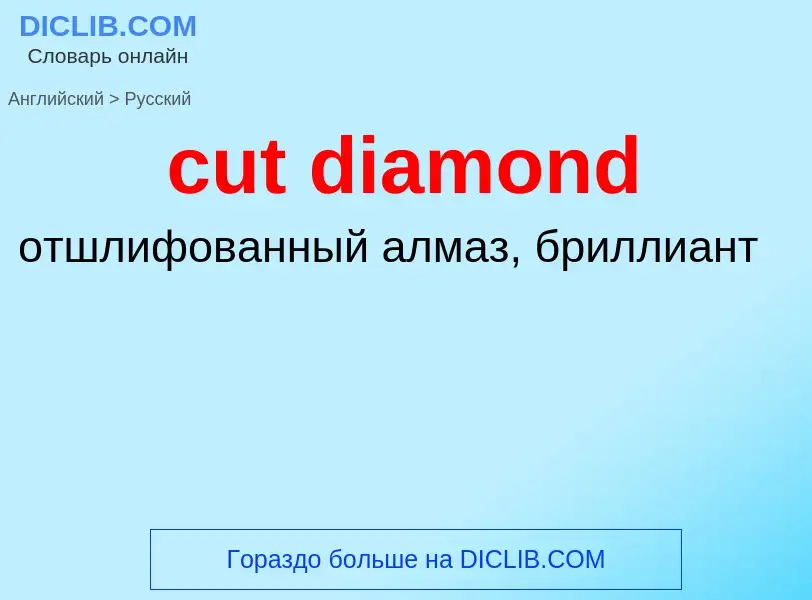Перевод и анализ слов искусственным интеллектом ChatGPT
На этой странице Вы можете получить подробный анализ слова или словосочетания, произведенный с помощью лучшей на сегодняшний день технологии искусственного интеллекта:
- как употребляется слово
- частота употребления
- используется оно чаще в устной или письменной речи
- варианты перевода слова
- примеры употребления (несколько фраз с переводом)
- этимология
cut diamond - перевод на русский
['daiəmən(d)kʌtə]
существительное
общая лексика
гранильщик
полировщик алмазов
общая лексика
алмазный резец
алмазный режущий инструмент
нефтегазовая промышленность
резец (затрубного расширителя), армированный алмазами
Википедия

Diamond cutting is the practice of shaping a diamond from a rough stone into a faceted gem. Cutting diamonds requires specialized knowledge, tools, equipment, and techniques because of its extreme difficulty.
The first guild of diamond cutters and polishers (Diamantaire) was formed in 1375 in Nuremberg, Germany, and led to the development of various types of "cut". This has two meanings in relation to diamonds. The first is the shape: square, oval, and so on. The second relates to the specific quality of cut within the shape, and the quality and price will vary greatly based on the cut quality. Since diamonds are one of the hardest materials, special diamond-coated surfaces are used to grind the diamond down. The first major development in diamond cutting came with the "Point Cut" during the later half of the 14th century: the Point Cut follows the natural shape of an octahedral rough diamond crystal, eliminating some waste in the cutting process.
Diamond cutting, as well as overall processing, is concentrated in a few cities around the world. The main diamond trading centers are Antwerp, Tel Aviv, and Dubai from where roughs are sent to the main processing centers of India and China. Diamonds are cut and polished in Surat, India and the Chinese cities of Guangzhou and Shenzhen. India in recent years has held between 90% of the world market in polished diamonds and China has held the rest of the world market share in a recent year. Other important diamond centers are New York City and Amsterdam.



